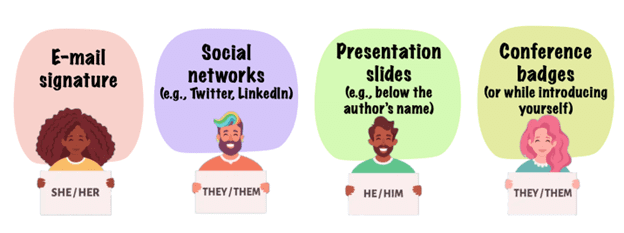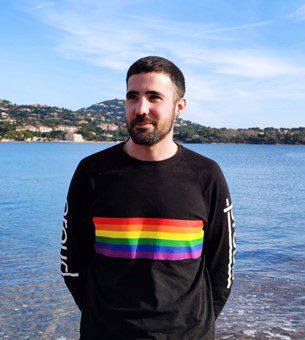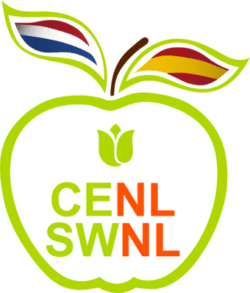In this blog, we want to delve into an important LGBTQ+ issue: gender identity, and show you what tools you can use to be a good LGBTQ+ ally.
Gender Identity and pronoun usage
To start off clearly and simply gender, gender expression and sex are not the same thing. One refers to physiological or genetic characteristics, we can almost say that when we talk about sex we refer to the label they put on us at birth when a doctor sees our sexual organs and it is what they put on the birth certificate, here we would also have to comment on intersexuality, but we better leave it for another time, you can find more information at this link [1].
We continue, once our sexual label is assigned, the next step is what society “expects” from us and how we have to behave, the most commonly expected is that we have social guidelines in what we could say “concordance” with the sex label that we have been given, this is the gender. This is where we start with the differences, I think we can agree that gender is an imposed and expected social code in the society we are living in, but we don’t have to agree with it just because others expect it, do we?
In case anyone doubts it, no, we don’t have to agree and we are not responsible for the expectations of our environment or society (e.g. family, school or other environments in which we move). Here appears our gender identity, which is how we decide to express ourselves, how we identify ourselves, and how we want to be seen by others, this is very very personal and must be respected because it is our personal choice. For some people who have suffered gender dysphoria [2] or related traumas, it is extremely important to be able to freely express how they see themselves and be seen as they identify themselves, trivializing gender expression is very painful and harmful, this denial is often accompanied by comments that do not make visible (that they consider a random whim) the expression of gender identity. With this behavior, a crucial part for queer people is being denied and suddenly they are labeled as sensitive when what is happening is that they are being denied the ability to decide again. No one is being harmed and our society is not being destroyed when we can all express ourselves the way we see ourselves and only ask for respect for those decisions and inclusivity instead of excluding us from it.
The ways in which we can express our gender identity are through the way we dress, the way we move, and more forcefully or more clearly through our pronouns. We all know and use pronouns to refer to others.
Tools to avoid discrimination and to be a good LGBTQ+ ally
Visibilization and correct use of pronouns
A very simple way to ensure inclusivity with LGBTQ+ people is the correct use of pronouns [3]. Each person identifies with the pronouns they feel are most appropriate, and it is important not to make assumptions about them. We can categorize pronouns into the groups associated with the binary gender “she”, “he”, and the non-binary gender “elle” (in English, “they”). There are people who identify with only one of them, but they can also identify with combinations of several pronouns. In the following links you can learn how to use them correctly in Spanish [4], English [5] and Dutch [6].
Making our pronouns visible requires very little effort, helps to normalize gender identity and shows that you are a good ally. By doing so, we will avoid harmful situations such as misgendering. Several examples of where to show our pronouns in our daily or professional lives include. See Image (obtained from “Alina Kotliar” (Getty Images)).
Use of inclusive language
Language is powerful and influences the way we perceive a message. Unconsciously, language often reflects our social norms. Sometimes, the expressions we use can be harmful to a gender, racial, etc. group. Did you know that the language used in a job offer can influence the gender diversity of candidates? [7, 8].
Therefore, it is important to know our internal biases, and to use, as much as possible, inclusive language in our professional and personal life. By doing so, we will avoid direct and indirect discrimination. One way to use inclusive language is to use gender-neutral, non-binary pronouns. Although there are other ways, for example, using general terms that do not require pronouns. This includes, talking about ‘people’ instead of ‘men or women’, the use of relative pronouns, and the use of general terms. There are several guides [9] and professional tools [10, 11] with “tricks” for using inclusive language that we link to in the references [4].
Avoiding and reporting discrimination
LGBTQ+ support has been increasing over the years. This does not mean that the number of assaults or discrimination has decreased. That is why it is important for a good ally to act on any situation of harassment or discrimination. For example, the “active bystander / bystander intervention” techniques are very useful to act against potential situations of discrimination or violence. The technique is based on ensuring social safety by acting before these situations by directing, delegating, distracting, distracting, and delaying (direct, delegate, distract, delay) [12, 13].
In a similar way, vulnerable groups can be protected by putting pressure on our institutions (public, private) to implement policies focused on preventing inequality and discrimination, guaranteeing inclusiveness and promoting training on LGBTQ+ issues [14].
Learning
Learning is ‘in the genes’ of people who work for or with science. To be better allies, it is important to be constantly learning about LGBTQ+ issues. There are several resources (e.g., [15]) with simple explanations of terminology and concepts related to LGBTQ+ issues or testimonials from LGBTQ+ scientists [16].
The learning process can also be extrapolated to, reflecting on our privileges, asking (and not assuming) in case of doubt, learning from our mistakes and (self-)correcting ourselves. Sometimes mistakes can be made, but it is important that we correct them immediately and reflect on them. The more diverse our work or personal circles are (and the more we make diversity visible), the easier it will be for us to learn about this topic.
It is important to note that many of the tools focused on avoiding discrimination are applicable to other groups and minorities (for example, ethnic groups), and also to the intersection of different groups (understanding as intersection, the ‘interaction’ of people belonging to multiple groups in discrimination).
REFERENCES
[2] https://www.homosensual.com/lgbt/diversidad/la-disforia-no-binaria-es-un-sintoma-social/
[3] No pronouns, please; we are scientists (The physiological society) https://www.physoc.org/blog/no-pronouns-please-we-are-scientists/
[4] Cómo usar el lenguaje no binario (safe_placeIg):
https://www.instagram.com/p/CPVJQkYDYFa/
[5] Gender Neutral Pronouns: What They Are & How to Use Them (Hubspot) https://blog.hubspot.com/marketing/gender-neutral-pronouns#:~:text=Gender%2Dneutral%20pronouns%20are%20words,’%2C%20or%20’Hir‘
[6] Usage of neutral pronoun in Dutch https://www.instagram.com/p/CVIsnG2I-9w/
[7] ‘Masculine’ language in job adverts deterring female candidates, research finds (People Management) https://www.peoplemanagement.co.uk/article/1743030/masculine-language-job-adverts-deterring-female-candidates
[8] Job advertisements that use masculine wording are less appealing to women (Gender action portal) https://gap.hks.harvard.edu/evidence-gendered-wording-job-advertisements-exists-and-sustains-gender-inequality
[9] Google’s New Language Tool Raises Questions About The Importance Of Communicating Inclusively (Rockcontent) https://rockcontent.com/blog/google-tool-inclusive-language/
[10] Gender, Sex + Sexuality Style guide (Conscious style guide) https://consciousstyleguide.com/gender-sex-sexuality/
[11] Inclusive Language in Microsoft Office (Ed portal) https://portal.ed.unc.edu/resources/inclusive-language-in-microsoft-office/
[12] Practicing Active Bystander Intervention https://www.rainn.org/articles/practicing-active-bystander-intervention#:~:text=An%20active%20bystander%20is%20someone,to%20speak%20up%20and%20intervene\
[13] Bystander Intervention and Queer Rights: How to be a Better Ally (One future collective) https://www.onefuturecollective.org/bystander-intervention-and-queer-rights-how-to-be-a-better-ally/
[14] https://prismaciencia.org/wp-content/uploads/2022/10/10medidasPRISMA_guia_implementacion.pdf
[16] How LGBT+ scientists would like to be included and welcomed in STEM workplaces (Nature) https://www.nature.com/articles/d41586-020-02949-3
Can you help us to become more? Become a member and participate. Spread our word on the networks. Contact us and tell us about yourself and your project.


Lety (ella/elle, she/they)
Bioinformatics and Data scientist
Soy Leticia, Lety (más neutro). Soy Farmacéutica y bioinformática, hice mi doctorado en la Complutense de Madrid en 2005 en Biología molecular sobre progenitores hematopoyéticos y trasplantes de Médula ósea. He trabajado durante más de 20 años en academia siempre en cáncer desde distintas perspectivas, desarrollo de nuevos fármacos, farmacogenómica y después desde la parte Bioinformática para ayudar en el diagnóstico y estratificación de pacientes. Hace unos meses me cambié a una compañía que desarrolla tratamientos de Terapia génica.

Alberto Gil Jiménez
PhD candidate at the Netherlands Cancer Institute
My name is Alberto. I studied Physics and Chemistry at the Autonomous University of Barcelona, and Bioinformatics at the VU University Amsterdam. I am currently doing a PhD at the Netherlands Cancer Institute (Amsterdam), where I am investigating the effects of immunotherapy and chemotherapy in urological cancer. For this I use bioinformatics and computational biology tools modeling protein and DNA/RNA sequencing data, obtained from human samples, which I integrate with clinical data.
